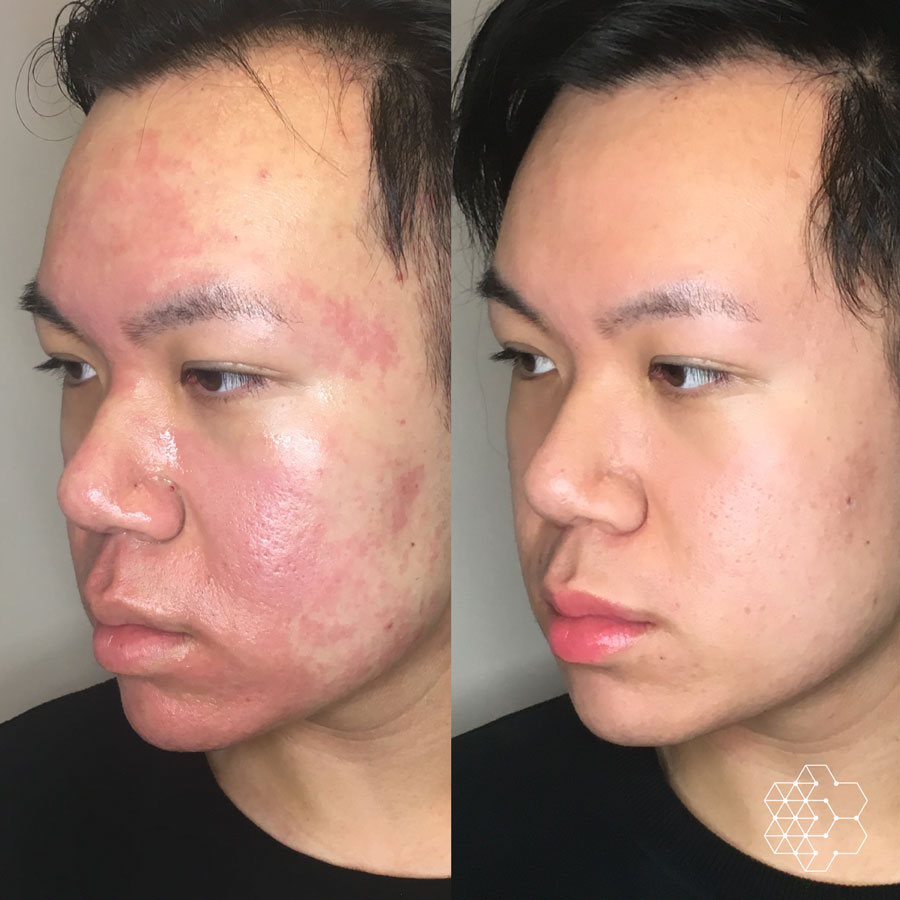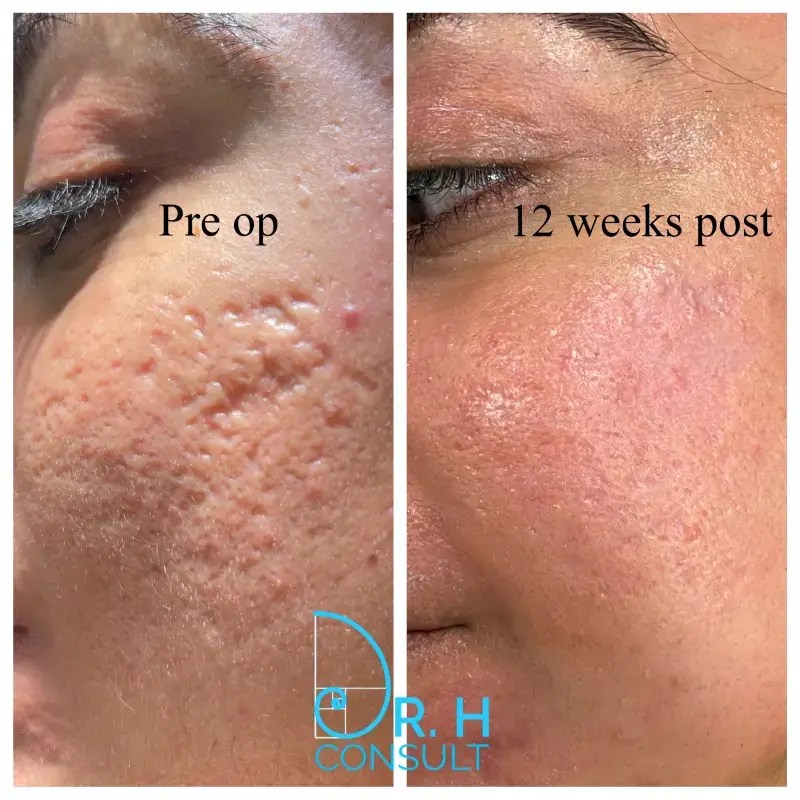Attain Smooth Skin with Specialized Acne and Acne Scars Treatment
Attain Smooth Skin with Specialized Acne and Acne Scars Treatment
Blog Article
Exploring Skin Problem: Determining and Treating Acne Scars for Healthier Skin
Acne marks represent a significant concern for people looking for to maintain healthy and balanced skin, as they can influence both appearance and self-confidence. Understanding the various kinds of scars, from atrophic to hypertrophic, is important for identifying proper therapy options. While specialist interventions like chemical peels and microneedling can be effective, the relevance of customized treatment plans can not be overemphasized. Preventative actions play a critical function in minimizing future scarring. As we check out these facets, one have to think about just how the ideal approach can cause transformative results.
Understanding Acne Marks
Understanding acne scars is critical for anybody that has experienced severe acne, as these marks can have an enduring impact on both physical appearance and mental health. When the skin undertakes inflammatory responses during energetic acne sores, acne marks form. The seriousness of scarring is commonly affected by variables such as the type of acne, its duration, and private skin attributes.
The body's all-natural recovery procedure can result in either atrophic scars, which show up as clinical depressions in the skin, or hypertrophic marks, which are elevated and arise from overflow of collagen. Additionally, the mental toll of acne marks must not be taken too lightly; several people report sensations of embarrassment, stress and anxiety, and reduced self-confidence. This emotional concern can impact social interactions and general lifestyle.
Addressing acne scars needs a detailed understanding of their development and impact. Understanding of the capacity for long-term consequences connected with untreated marks can encourage people to look for appropriate therapies. Early treatment and effective management methods can substantially boost skin look and enhance emotional strength, highlighting the value of recognizing the complexities bordering acne scars.
Kinds Of Acne Scars
Acne marks can be classified into distinctive kinds, each displaying distinct qualities and requiring details therapy methods. The primary sorts of acne scars consist of atrophic, hypertrophic, and keloid marks.

Hypertrophic marks, on the other hand, are elevated over the skin level and are the result of too much collagen manufacturing during the healing process. They commonly remain within the limits of the initial acne sore. Keloid marks are comparable yet prolong beyond the initial injury site, developing larger, increased areas that can be itchy or agonizing.
Understanding these kinds of scars is important for choosing suitable treatment options. Various scars might respond much better to particular treatments, such as laser treatments, fillers, or surgical treatments, highlighting the significance of a tailored approach to acne mark management.
Recognizing Your Scars
When examining the look of your skin, it is essential to precisely recognize the type of marks existing, as this will certainly notify one of the most reliable therapy approach. Acne scars typically fall under two categories: atrophic and hypertrophic marks. Atrophic marks, which are one of the most common, look like depressions or impressions on the skin. These can better be categorized right into ice-pick scars, boxcar scars, and rolling marks, each exhibiting distinctive attributes and requiring different methods for assessment.
Hypertrophic scars, on the other hand, are raised and happen as a result of extreme collagen manufacturing during the recovery process. Identifying the specific features of your scars-- such as appearance, width, and depth-- is essential for correct identification. Additionally, take into consideration the distribution of scars across your skin, as this can indicate the intensity and period of the acne problem.
Involving with a skin specialist can give useful visit this page insights into the nature of your scars, assisting in the differentiation between different types. A complete understanding of your scars will eventually bring about a more customized and reliable therapy plan, ensuring a more clear and much healthier skin tone.
Therapy Choices Readily Available
Identifying the particular kind of acne scars present on your skin prepares for discovering reliable therapy alternatives. Usual types of acne marks include atrophic (clinically depressed), hypertrophic (elevated), and post-inflammatory erythema.
For atrophic marks, options such as chemical peels, microneedling, and laser resurfacing are widely made use of. Chemical peels off use acids to remove the outer layer of skin, advertising new cell development.
Hypertrophic scars can be treated with corticosteroid injections to flatten the mark or laser therapy to lower redness and boost look. acne and acne scars treatment. Silicone gel sheets and pressure dressings might additionally aid in managing more info here raised marks
Furthermore, facial fillers can briefly fill out depressions from atrophic scars, while surgical excision might be appropriate for serious situations. Each treatment option has its advantages and considerations, making it essential to talk to a dermatologist. They can give tailored recommendations based on the type and seriousness of your scars, as well as your skin type and general health and wellness.
Tips for Prevention
Efficient prevention strategies can considerably decrease the chance of developing acne scars. Using non-comedogenic items aids protect against clogged up pores, which can intensify acne.
Preventing need to stand out or pick acne sores is vital, as this can lead to deeper skin damage and enhance the threat of scarring. Rather, think about making use of a cold compress or over-the-counter treatments to reduce swelling and soreness.
Sun protection is another essential element of avoidance; ultraviolet (UV) rays can dim scars and impede the healing procedure. Using a broad-spectrum sun block with at the very least SPF 30 daily can protect the skin and promote even healing.
Finally, maintaining a balanced diet regimen rich in vitamins, minerals, and anti-oxidants supports skin health and wellness and healing. Remaining hydrated and handling stress degrees can additionally play a considerable role in decreasing acne flare-ups. By implementing these strategies, individuals can significantly lessen their opportunities of developing acne marks.

Conclusion
In verdict, understanding and identifying acne marks is necessary for effective therapy and accomplishing much healthier check here skin. Different types of acne marks, consisting of hypertrophic and atrophic marks, demand certain treatments customized to private demands.
The body's all-natural recovery process can result in either atrophic marks, which appear as clinical depressions in the skin, or hypertrophic marks, which are raised and result from overproduction of collagen. They are more split into 3 subtypes: ice choice scars, boxcar scars, and rolling scars. Acne scars normally drop right into 2 groups: hypertrophic and atrophic scars. These can additionally be identified into ice-pick scars, boxcar marks, and rolling marks, each displaying unique attributes and needing different methods for evaluation.
Different kinds of acne marks, consisting of hypertrophic and atrophic marks, require specific treatments customized to specific requirements.
Report this page